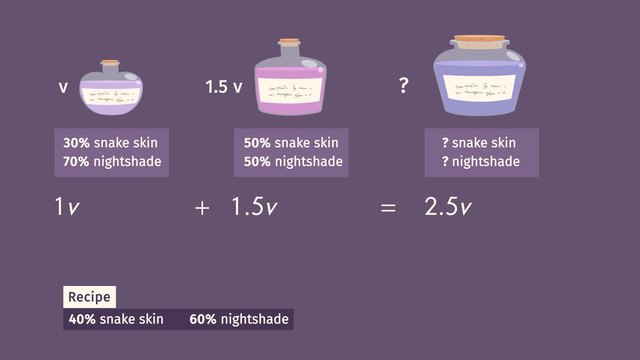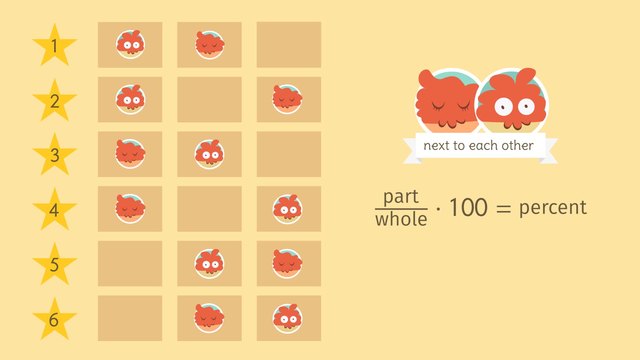Developing a Probability Model
Basics on the topic Developing a Probability Model
Developing a Probability Model – Introduction
Probability models are essential tools in understanding and calculating the likelihood of various outcomes. By employing mathematical representations, these models are critical in fields that range from meteorology to finance, aiding in both forecasting and strategic planning.
Probability Model – Definition
A probability model is a mathematical representation that defines the structure of a probabilistic experiment. It quantifies the chances of potential outcomes and is constructed using a sample space and probability rules.
The sample space (S) is a comprehensive list of all possible outcomes of a probabilistic experiment, while events (A, B, C...) are particular outcomes or combinations of outcomes within the sample space that we are interested in evaluating.
Check how well you understand this topic so far.
Types of Probability Models – Explanation
There are two primary types of probability models:
| Probability Model Type | Description | Example |
|---|---|---|
| Discrete Probability Models | Applicable to scenarios with a finite or countable number of outcomes. | Roll of a dice (six countable outcomes) |
| Continuous Probability Models | Suitable for situations where outcomes form a continuum. Measurements can take any value within a range. | Height of a person |
Developing Probability Models – Summary
Key Learnings from this Text:
- Probability models rely on underlying assumptions and the data at hand.
- Discrepancies between model predictions and actual outcomes are opportunities to refine our models, ensuring they better represent reality.
- There are different types of probability models: discrete and continuous probability models.
Developing a Probability Model – Frequently Asked Questions
Transcript Developing a Probability Model
Kai, who is captain of the Arctic Wolves, is gearing up for a season opener against the Glacier Gliders. He is looking back on last year's stats to make predictions on how many goals each team will score in the game. Kai decides that Developing a Probability Model is the best way to display the data. This model will display the frequencies or outcomes of an event, and in this case the number of goals scored in a game. A probability model can be in the form of a table to display the events, frequencies, and probabilities. This table shows all the possible outcomes of an event, and therefore the probabilities all need to add to one whole. Kai begins to fill in the table with his team's data, The Arctic Wolves! He looks at the past season's final scores and records the goal outcomes. The frequency column shows how many times the team scored that amount of goals in a game. Remember, the probability of an event measures the likelihood it will occur. First, find the total number of games, twenty. During last season, there were two games with no goals, and the probability would be two out of twenty. This probability can simplify to a one out of ten chance of not scoring at all. The next probability is five out of twenty, and simplifies to one-fourth. The last rows would be nine out of twenty, one out of twenty, and three out of twenty none of which need to be simplified. Let's check for discrepancies and find the sum of our probabilities. These values add to one, to represent the whole season, therefore our table is accurate. Kai also wants to analyze the Glacier Glider's stats over their season, but we need to help him complete the missing row! To find the last row, we need to remember that there are twenty total games in a season. Also, for the table to have no discrepancies, the probabilities need to have a sum of one. The common denominator for the probabilities is twenty. When we add them we have a sum of nineteen over twenty. The difference between twenty and nineteen is one so the probability that they scored four or more goals was one game out of twenty. Let's answer a few questions about our two probability models. Based on last year's stats, what was the probability for the Arctic Wolves that the team scored two or more goals? The sum of these probabilities would be a thirteen out of twenty chance that the Arctic Wolves would score at least two goals in a game. Based on last year's stats, which team had a higher probability of having a game that they scored three or more goals in? Both teams are predicted to have the same one-in-five chance that they will have a game where they score three or more goals. It looks like this match up between the Arctic Wolves and the Glacier Gliders is going to be a close one! To summarize, developing a probability model is a way to display the frequency and probabilities of an event occurring. Remember, the probabilities must always add to one to prove no discrepancies. Creating this type of model can be helpful when needing to make predictions for the future. Good thing Kai set an alarm, otherwise he would have probably missed the first game!
Developing a Probability Model exercise
-
Calculate the probability.
HintsTo find the relative frequency we divide the number of times something occurs by the total number.
For example, if I throw a coin $7$ times and I get a tail $4$ times, then the relative frequency $= \frac{4}{7}$
For this question the relative frequency is worked out as you can see here.
SolutionThe dice landed on five $7$ times and the dice was rolled $10$ times.
$= \mathbf{\frac{7}{10}}$
-
Which of the probabilities could be correct?
HintsThe sum of all the probabilities $= 1$.
For example, with a frequency of $5$,
$\frac{2}{5} + \frac{1}{5} + \frac{2}{5} = \frac{5}{5} = 1$
The frequency is the total number of matches $= 20$.
All the probabilities should $= \frac{20}{20} = 1$ for the table to be correct.
SolutionThe sum of probabilities should be $1$.
$\frac{7}{20} + \frac{5}{20} + \frac{8}{20} = \frac{20}{20} = 1$
-
Calculate the probabilities.
HintsFor the total frequency, we need to add up all the frequencies to see how many students are in 8Y.
For the relative frequencies of red, silver, and white, work out the relative frequency by using the number in the category divided by the total frequency.
For example, if there were $20$ students asked and $3$ chose red then the relative frequency of choosing red would be $\frac{3}{20}$.
For the total of the relative frequencies, we work out the sum of the probabilities.
Solution- There were $6 + 9 + 13 = 28$ students in 8Y
- $6$ people chose red, so the relative frequency is $\frac{6}{28}$
- $9$ people chose silver, so the relative frequency is $\frac{9}{28}$
- $13$ people chose white, so the relative frequency is $\frac{13}{28}$
- TOTAL relative frequencies $= 1$
-
Calculate the frequency.
HintsAs relative frequency is the number of losses divided by the total games we need to find the equivalent fraction for $0.15$. Ideally we need the denominator to be $40$ to help us with frequency.
For example, first find an equivalent fraction in twentieths.
We can do this quicker by multiplying the total games by the relative frequency. For example, $0.15\times40$ is easier here.
SolutionAnswer is $6$ games.
$40\times 0.15 = 6$ games lost.
-
What is the probability?
HintsThe sum of all the probabilities $= 1$.
For example, with a frequency of $9$,
$\frac{4}{9} + \frac{1}{9} + \frac{4}{9} = \frac{9}{9} = 1$
The frequency is the total number of pizzas sold $= 15$.
All the probabilities should $= \frac{15}{15} = 1$, which will help you find the amount of vegetable pizzas sold and then the relative frequency.
To find the frequency of vegetable pizzas sold we subtract $8$ and $3$ from $15$.
Solution- The sum of all the probabilities $= 1$.
- There were $15$ pizzas sold, therefore, $15 - 8 - 3 = 4$.
- That is $4$ vegetable pizzas.
- The relative frequency of vegetable is $\frac{15}{15} - \frac{8}{15} - \frac{3}{15} = \frac{4}{15}$
-
Work out the total from the frequency and relative frequency.
HintsThis problem is in reverse. We have the frequency and the relative frequency, so we have to work in reverse to find the total sunflower seeds planted.
- Total planted $\times$ relative frequency $=$ frequency
- Total $\times 0.84 = 150$
Rearrange to find the total, For example using similar numbers,
Total $\times 0.84 = 250$
Divide both sides by $0.84$
Total $= \dfrac{250}{0.84}$
Total $= 298$ to the nearest whole number.
SolutionThe correct answer is $179$ to the nearest whole number.
Total $\times 0.84 = 150$
Divide both sides by $0.84$
Total $= \dfrac{150}{0.84}$
Total $= 179$ to the nearest whole number.















